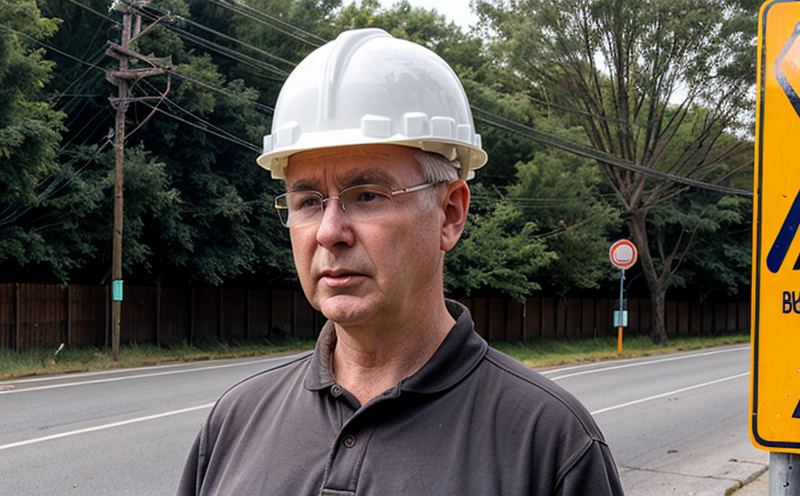ISO 6397 Noise Emission Testing of Industrial Equipment Outdoors
The ISO 6397 standard is designed to provide a method for measuring the noise emissions from industrial equipment when it is operated outdoors. This test is crucial for ensuring that industrial processes comply with environmental and community noise standards. The measurement process involves placing the piece of equipment in an open outdoor environment, where its operational noise can be accurately captured using specified methods.
The standard specifies several key parameters to ensure accurate measurements. These include the position of microphones relative to the source, the background noise levels at various points around the test area, and the duration over which sound is measured. The equipment must operate under normal working conditions during this period to provide a true representation of its acoustic behavior.
The testing process begins with preparing the site by ensuring it meets the requirements outlined in ISO 6397. This includes setting up microphones at precise distances from the noise source, ensuring they are not exposed to wind or other disturbances that could affect their readings. Once everything is set up correctly, the equipment undergoes a series of tests designed to simulate real-world operating conditions.
During these tests, sound levels are recorded continuously for several minutes at each microphone location. The data collected from all locations is then analyzed using statistical methods provided in ISO 6397 to determine compliance with specified limits. Compliance can be determined either by averaging the results across multiple measurements or comparing individual measurement values against set thresholds.
One of the challenges when performing this type of test outdoors is accounting for background noise. Background noise can vary significantly depending on weather conditions and time of day, so it's important to account for these variables in your analysis. Another challenge lies in maintaining consistency between different tests conducted over extended periods or across multiple sites.
ISO 6397 also provides guidance on how to handle such variations. For instance, you may need to take additional measurements during quieter times if background noise levels exceed certain thresholds before reevaluating compliance based on new data.
| Use Case | Description |
|---|---|
| Evaluating Noise Emissions From Construction Machinery | Determining whether construction machinery meets local noise regulations. |
| Assessing Compliance With Environmental Standards | Ensuring industrial facilities meet environmental protection goals regarding sound pollution. |
| Comparing Noise Levels Between Similar Equipment Models | Evaluating which model produces less noise during operation. |
| Monitoring Changes In Noise Emissions Over Time | Tracking improvements or degradations in sound control measures implemented by manufacturers. |
| Identifying Sources Of Excessive Noise Pollution | Pinpointing specific components of equipment responsible for high noise levels. |
| Supporting Product Development And Design Reviews | Incorporating feedback from acoustic testing into product design iterations to reduce noise emissions. |
| Evaluating Noise Control Measures Effectiveness | Determining the effectiveness of silencers, mufflers, and other sound suppression devices used in industrial processes. |
| Meeting Regulatory Requirements For New Equipment Introduction | Ensuring newly introduced equipment complies with all applicable noise emission standards before deployment. |
Eurolab Advantages
EuroLab offers unparalleled expertise in ISO 6397 compliance testing. With years of experience and advanced instrumentation, we ensure accurate and reliable results that meet or exceed industry expectations.
Our team of professionals understands the nuances of outdoor noise measurement and can guide you through every step of the process—from setup to final analysis. We provide detailed reports tailored specifically for your needs, ensuring clear communication between testing outcomes and regulatory requirements.
EuroLab's commitment to quality extends beyond just meeting standards; we strive to exceed them by offering innovative solutions that address unique challenges faced by our clients in various industries.
Customer Impact and Satisfaction
By choosing EuroLab for your ISO 6397 noise emission testing needs, you can expect significant benefits. Our services not only help ensure compliance with stringent regulations but also contribute positively to environmental sustainability efforts.
Clients appreciate the comprehensive nature of our offerings, which include detailed technical support throughout the entire process. This ensures that any potential issues are addressed promptly and effectively, leading to smoother operations overall.
Moreover, the accuracy and reliability of our measurements provide peace of mind knowing that your equipment is performing as intended without unnecessary noise interference. This leads to enhanced reputation among stakeholders and improved customer satisfaction.
In summary, partnering with EuroLab means gaining access to world-class expertise in acoustics testing along with personalized service designed specifically for your unique requirements. You can rest assured that you are receiving the highest quality of care when it comes to assessing noise emissions from industrial equipment outdoors.





